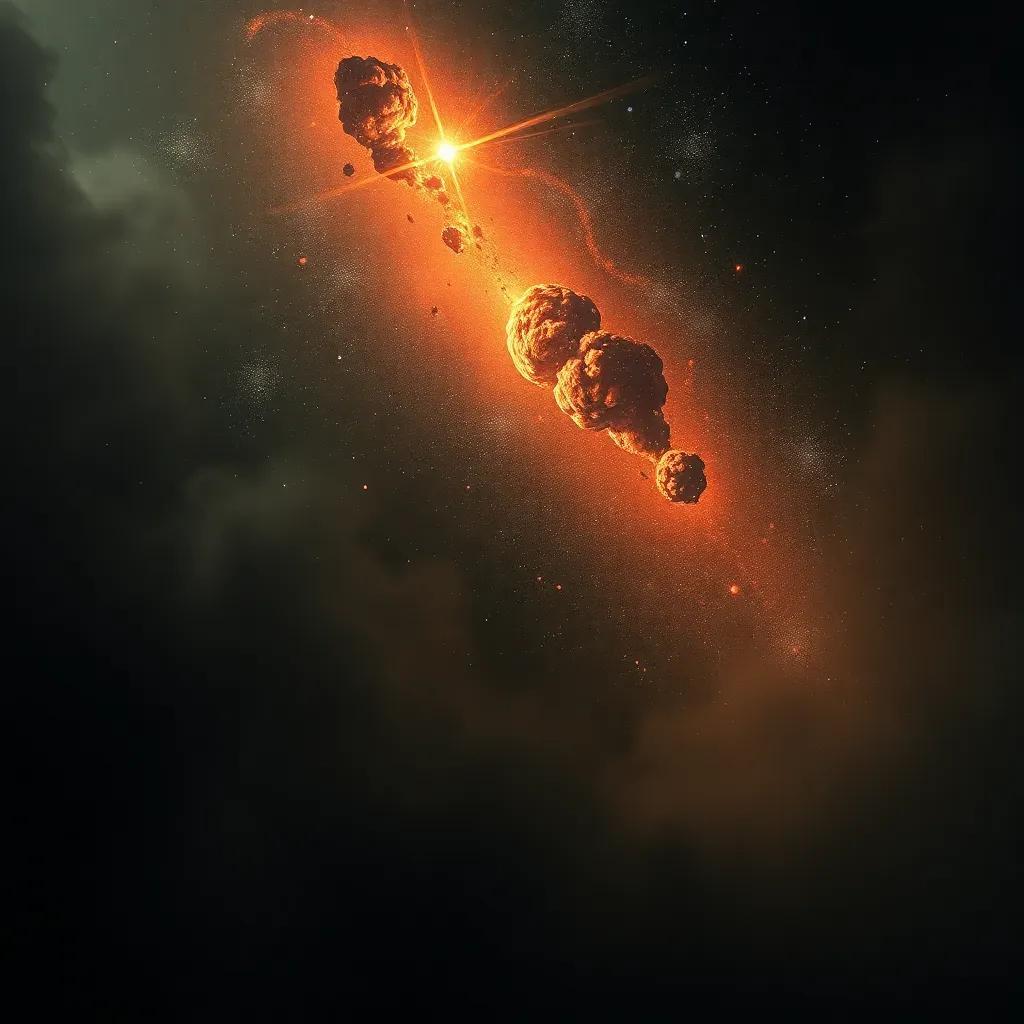Table of Contents
Cosmic Collision Revelations

What if the universe holds solutions to its own mysteries within the ripples of gravitational waves? As scientists grapple with the Hubble tension-the discrepancy between the universe’s measured expansion rate and what early cosmic events suggest-new methods of exploration are emerging.recent studies reveal that over 70% of astronomers now consider gravitational waves as pivotal in understanding this cosmic dilemma. As we venture deeper into the cosmos, we explore how these ethereal waves may illuminate our understanding of cosmic expansion, ushering in a potential resolution to longstanding questions.
Understanding hubble Tension
The Hubble tension arises from differing measurements of the universe’s expansion rate, with values diverging by about 10% between measurements derived from early cosmic microwave background data and those from direct supernova observations. Gravitational waves, first observed in 2015, open a window to the universe’s cataclysmic events, like merging black holes and neutron stars, which can yield real-time data about cosmic distances and expansion.
- varied Measurements:
- Cosmic background radiation: 67.4 km/s/Mpc
- Supernova observations: 73.0 km/s/Mpc
- Data from Gravitational Waves:
- Recent data from LIGO and Virgo collaborations suggest that merging neutron stars radiate gravitational signals which can refine distance measurements.
This innovative approach may provide a bridge between these conflicting measurements.By utilizing gravitational waves, scientists hope to refine their cosmic distance ladder and settle the discrepancies in Hubble’s measurements. Is it possible that echoes from the universe can echo back the answers we seek?
The Chiming of Gravitational Waves
As researchers push the boundaries of gravitational wave astronomy, the potential for more than 100 detected gravitational wave events could significantly improve our understanding of cosmic distances and expansion rates. Compared to the 20 events observed in 2017, this explosion in data can drastically reshape the cosmological landscape. Each detected wave contributes to a larger dataset that helps calibrate cosmic distances even further.
Utilizing a Data Snapshot, we examine how these seismic waves are already reshaping astrophysics:
| Year | Events Detected | Implication for Hubble Tension |
|---|---|---|
| 2017 | 2 | Initial applications limited |
| 2021 | 50 | Early hints at resolving tension |
| 2024 (projected) | 100+ | Potential for comprehensive resolution |
These insights highlight the transformative potential of gravitational waves in cosmology, where updated calibration tools may recalibrate our distance measurements and, consequently, settle the widening rift in our understanding of the universe.
Implications Beyond the Cosmos
The implications of resolving the Hubble tension extend beyond theoretical physics. As an example, clarifying the cosmic expansion rate could significantly impact our understanding of dark energy and its role in the universe, which currently constitutes about 68% of the cosmos. Uncovering answers could also shift areas like cosmological modeling, funding for future space missions, and even our philosophical perspectives about the universe’s fate.
Understanding how gravitational waves help demystify the universe’s expansion could lead to advancements in technology and methodologies used in other scientific fields, exemplifying the interconnectedness of research pursuits.
Cosmic Clarity Awaits

As we stand on the brink of new discoveries, the echoes of gravitational waves may indeed hold the keys to unlocking cosmic secrets. with every collision and merger in the universe, we edge closer to articulating a clearer picture of cosmic expansion. The journey to understanding may lead us to redefine not only Hubble’s legacy but the fabric of space-time itself.
We may soon find out: Can the universe finally align its clocks?




